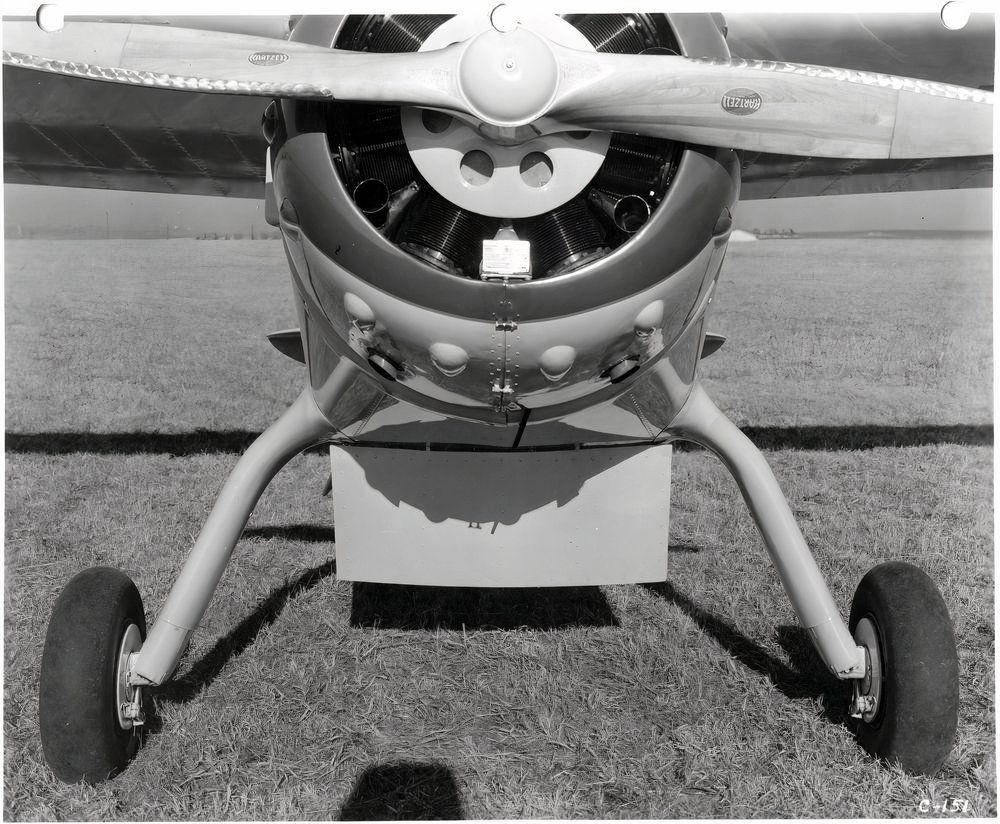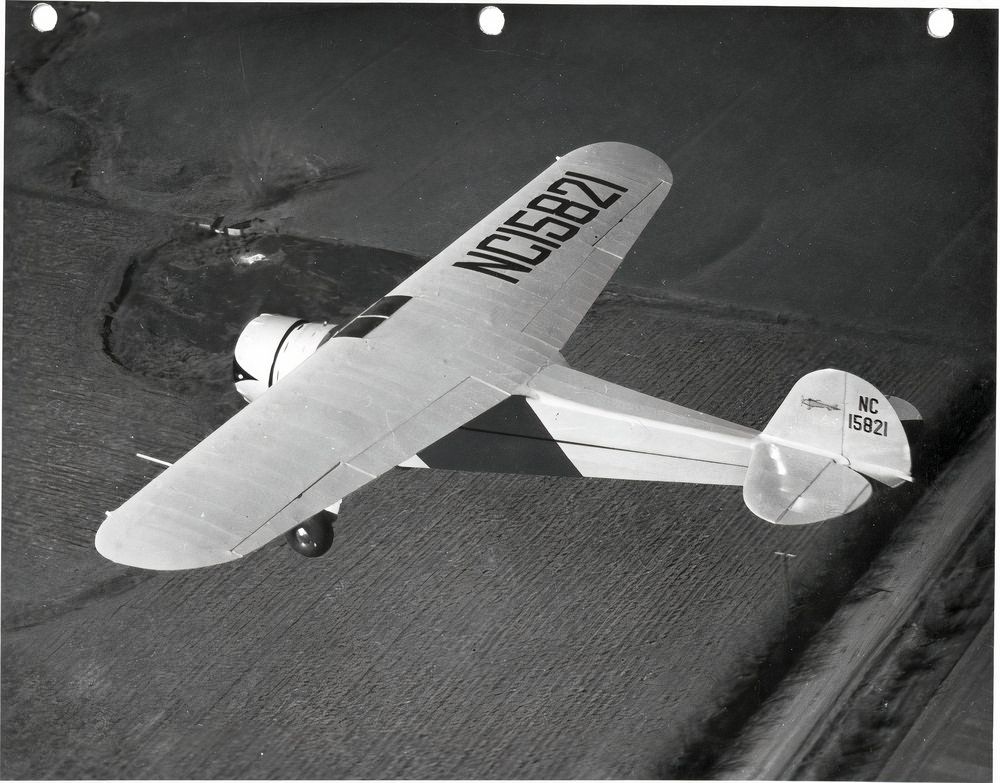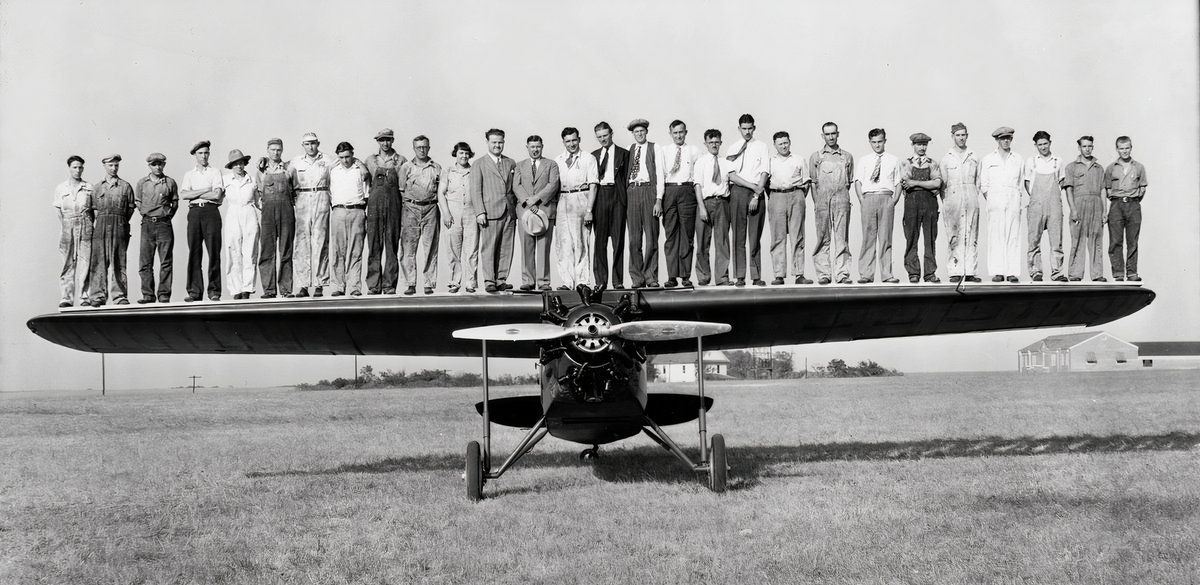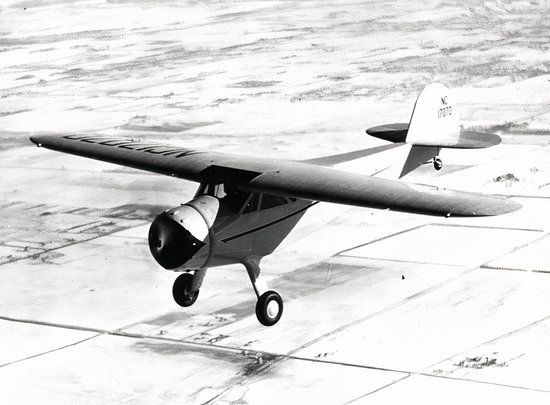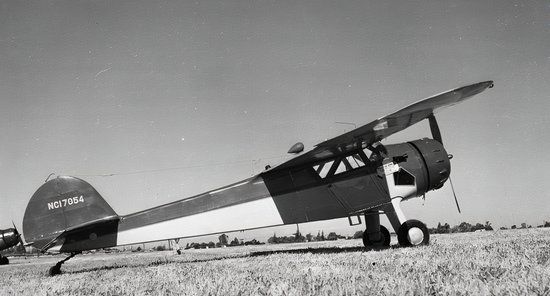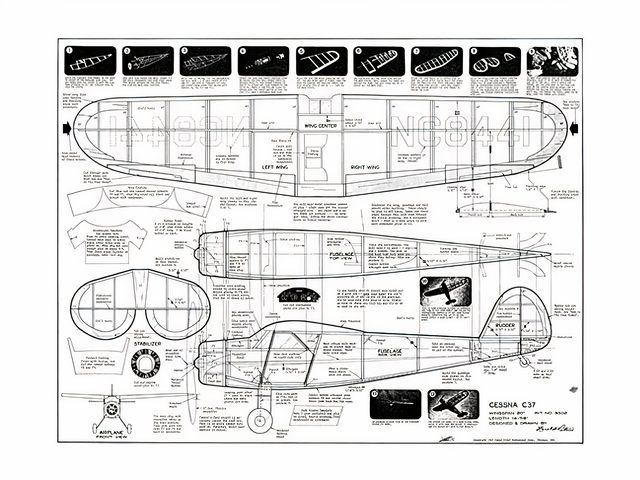The Cessna
Airmaster family seats three passengers and a pilot seat. It is a single-engine, powered by the seven-cylinder Warner Super Scarab. The Airmaster offered at least ten variants that satisfied different purposes, including the US Air Force and civil operations. It included landing airbrakes on the wings and was the first airplane to incorporate flaps. These advances made aircraft highly aerodynamic and efficient worldwide.
Dwane Wallace designed the first Airmaster, and the C-34 model was introduced in 1935. Clyde Cessna retired from the industry, leaving the company to his nephew, Eldon. The production line, which began with the C-34, evolved into more advanced versions like the C-37 and C-38.
Photo: San Diego Air and Space Museum
These models featured more expansive cabins, improved landing gear, electric flaps, and rubber engine mounts. The final revisions were the C-145 and C-165, with 80 built with upgraded engines. The C-165 was the series’ final and most powerful model and Cessna’s last tube and fabric aircraft.
The Cessna Model C-37 series was built in 1937 and featured split-type trailing-edge wing flaps and electric motors. Two aircraft in the series were registered in Australia, with the first being a Model C-37 VH-UZU registered in 1937. The series was also introduced to the US Air Force in 1942.
The Airmaster models evolved from the C-34 to the C-37 and C-38, featuring improvements such as wing-mounted flaps, wider fuselages, landing gear, and rubber engine mounts. They were powered by the 145 HP Warner Super Scarab engine. As of December 2006, 14 Cessna C-37 aircraft are in the FAA
database.
Cessna in the 1930s GD
Following the Wall Street crash, Cessna Aircraft faced an economic
great depression
. Eldon Cessna, son of Clyde Cessna, designed a low-cost, cheap-to-operate aircraft, the Model EC-2. Cessna Aircraft Company designed the 1930s two-seat tourer to counter the market downturn. The prototype was canceled and crashed years later.
Photo: San Diego Air and Space Museum
Clyde and his son Eldon Cessna built the Air Racer CR-2 in the 1930s, which crashed during the Chicago Air Race. This incident changed Clyde’s attitude towards aviation and led to the closure of the Cessna Aircraft Company. In 1936, Clyde Cessna sold the company to his nephews Dwane and Dwight Wallace, who remained there for 40 years and developed the Airmaster Design.
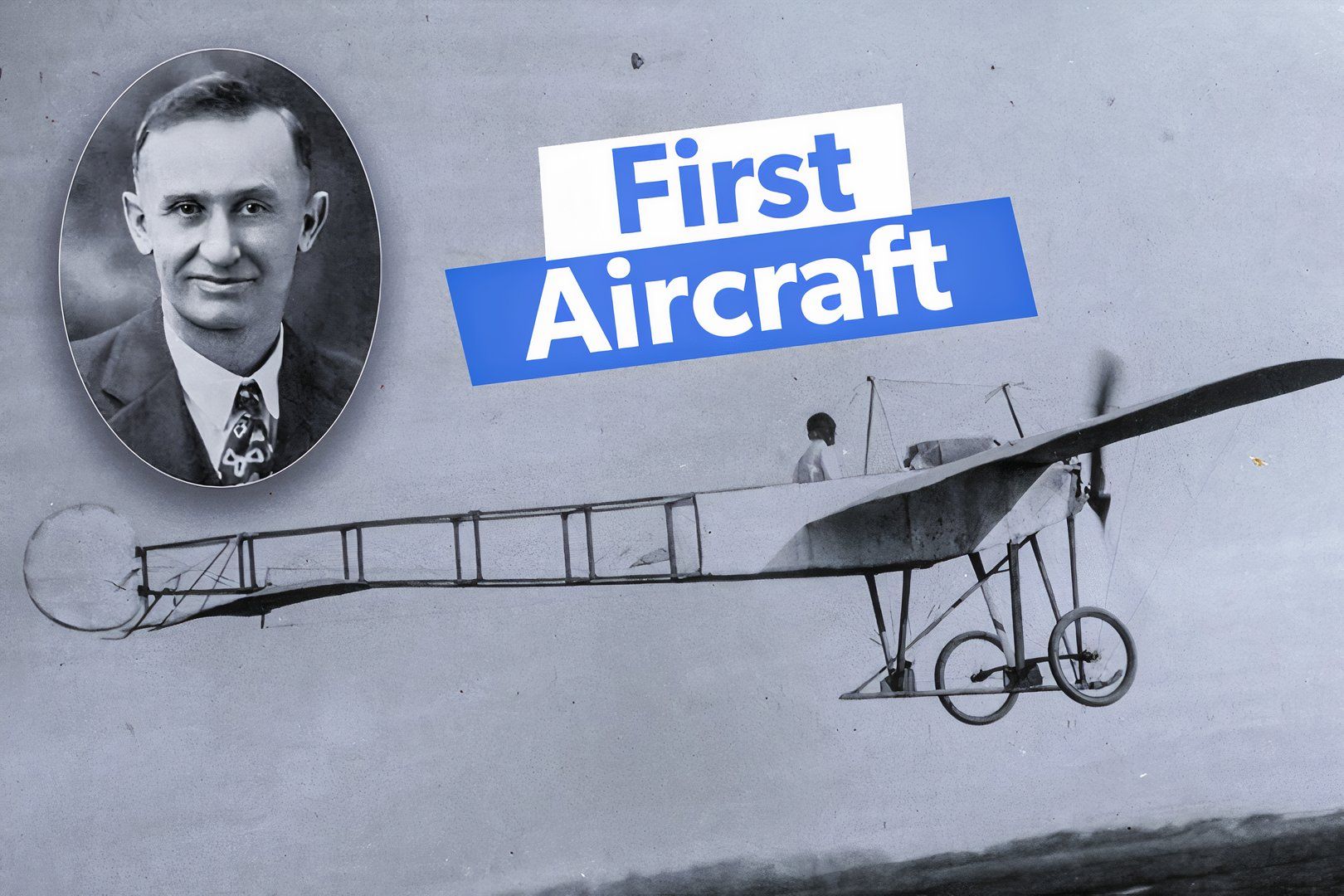
Clyde Cessna’s First Aircraft: A Look At The Cessna Silverwing
In 1911, the first airplane made by Clyde Cessna, christened “Silverwing,” took flight.
WWII regrowth and post-downturn
Dwane Wallace and Eldon Cessna built the new design, which excelled at all levels. Landing airbrakes were added to the wings, an innovation at that time. The early Cessna was also one of the first aircraft to feature flaps.
After the war, Cessna began producing all-metal aircraft. Later, these models were built with different materials, which increased drag but also resulted in significant weight loss.
Photo: Textron Aviation
During World War II, the Airmaster line was discontinued due to the high cost and time-consuming production of 1930s technology. The airplane was labor-intensive to build, allowing Cessna to hire more assembly workers and limiting its future. It was replaced with aluminum aircraft with strut-braced wings, such as the Cessna 120.
Photo: San Diego Air and Space Museum
The plane that redefined light aviation
The Airmaster’s range was about 750 miles (1,207 km), allowing long cross-country flights. It could reach a maximum altitude of about 18,000 feet (5,486 m), with a climb rate of approximately 900 feet per minute. The aircraft’s empty weight is 1,300 pounds (590 km), and its gross weight is 2,220 pounds (1,007 km), carrying a maximum fuel capacity of 35 gallons (130 L).
|
Feature |
Specification |
|---|---|
|
Maximum speed |
141 knots (162 mph, 261 km/h) |
|
Length |
24 ft 10 in (7.57 m) |
|
Height |
7 ft 3 in (2.21 m) |
|
Wingspan |
33 ft 10 in (10.31 m) |
The flying experience and design
The Airmaster was a small, compact airplane with a fabric-covered fuselage, a full cantilever, a high wooden wing, and short-coupled landing gear. It had electrically activated flaps on the bottom fuselage and wood wings. The cabin was tight and compact, with a rear door leading to the front office. The pilot and copilot sat directly in front, with their feet straight positioned.
Photo: San Diego Air and Space Museum
Visibility from the left side is limited due to small side windows and a narrow windshield. The tailwheel lock allows the pilot to lock the airplane for takeoff with the third wheel on the trail and depart with little deviation. There is some steering with the tailwheel locked, but only a few degrees. The Warner’s is a unique, challenging aircraft with a reassuring Scarab engine.
The C-37 Air Masterpiece
The Airmaster C-37 focused on increasing cabin comfort, redesigning flaps, and improving the main landing gear. Production No. 32 of the C-34 was a prototype for the Cessna C-37. Changes included:
- Increasing the forward fuselage width.
- Adding 2 inches to the rear corner of the cabin entry door.
- Lowering the engine mount.
- Narrowing the firewall.
- Using electronically operated wing flaps.
They also modified the Warner engine’s cowling and baffle arrangement for improved cooling. The central landing gear tread increased to 7 feet, and the wheel size increased to 6.50 x 10 inches.
The power of Warner’s engines
Warner Aircraft Corporation produced radial air-cooled engines. The Super Scarab was introduced with the 108 kW (145 hp) and the 123 kW (165 hp) versions. The Super Scarab 165 was used in military aircraft like the Fairchild UC-61, Harlow UC-80, Cessna UC-94 (Airmaster Variant), and Sikorsky XH-4 helicopters. It was also used in civilian aircraft like the Cessna Airmaster C-39.
The Propulsion-Reciprocating & Rotary engine has seven cylinders made of various materials: aluminum, steel, leather, copper, rubber, and fabric. From 1928 to the early 1930s, Warner Aircraft Corporation of Detroit, Michigan, manufactured the Scarab family for airplanes.
The airmaster variants include the C-34, C-37, C-38, C-39, C-145, C-165, and C-165D. The aircraft were built with varying capacities and used by
Australian
, Finnish, and US Air Forces. The C-34 was a four-seat light cabin aircraft, while the C-37 had a widened cabin and improved landing gear. The C-38 had a wide landing gear with curved legs, a taller vertical tail, and a landing flap under the fuselage.
The C-165D had a 175-horsepower engine.
Cessna continues to flourish
Cessna is a globally recognized private aircraft brand offering a wide range of products catering to novice and advanced aviators. The brand provides piston aircraft for pilot training and recreation, rugged turboprops with notable payloads, and elegant Citation jet products with uncompromising style, comfort, and reliability.
Cessna manufactures utility aircraft such as air ambulances and surveillance aircraft.
Customizable options have expanded, offering diverse solutions, designs, and configurations to meet each customer’s needs. The Cessna aircraft line has become a family, with pilots starting their careers on a Cessna
Skyhawk
piston and eventually traveling the world in a
longitude
jet. Customers have been proud to say they enjoy being a Cessna pilot since the beginning.


